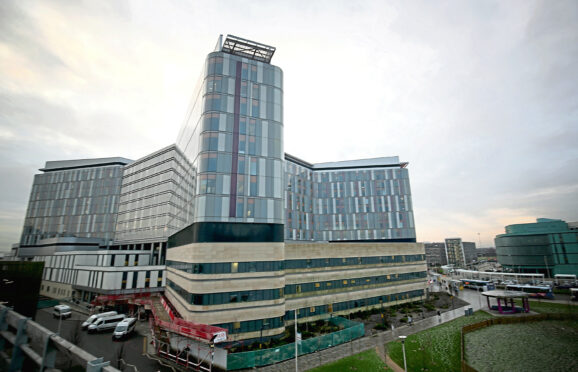
Nurses at a flagship NHS hospital say they are suffering an intolerable wave of stress, anxiety and fear as a result of staffing levels.
In a letter to be sent to the board at the Queen Elizabeth University Hospital in Glasgow, members of the Royal College of Nursing (RCN) say they have grave concerns and warn nurses are under such pressure some are going off sick or quitting their jobs.
The letter claims that on the night of June 22, an overnight ratio of just 2.5 nurses to 84 patients was recorded. That would be two nurses, plus a support worker. Five days later, it claims, absences meant staffing levels were short of 116 registered nurses and 29 health care assistants and support workers. At the same time, they claim red flag danger warnings for staffing were in place in 15 department of medicine wards and 11 elderly wards.
NHS Greater Glasgow & Clyde has questioned the figures but the nurses’ letter states: ”We express our grave concerns over staffing levels. Levels of stress, anxiety, fear and vulnerability among staff are now intolerable.”
It said earlier concerns about staffing levels – with one nurse working with 20 patients – had not been addressed, adding: “Our members and their colleagues are increasingly under tremendous pressure and in too many cases, it is having a serious impact on their mental health. This leads to staff going on sick leave or leaving their posts completely which, in turn, further diminishes the staffing levels.”
Barbara Sweeney, Senior RCN Officer, said: “The RCN is working to highlight serious concerns about severe staffing shortages and the impact these are having on patient safety and staff wellbeing. We will be raising these concerns with the health board.”
NHS Greater Glasgow & Clyde said: “We greatly value the work and commitment from all of our nursing staff throughout the pandemic. They have gone above and beyond to deliver excellent services to our patients.
“We work with NHS Scotland guidance to determine the nursing and midwifery workforce in the speciality areas. At all times, the safety and care of our patients, alongside the wellbeing of our staff, is our absolute priority.
“Our sites have safety huddles throughout the day, where issues relating to patient care and safety are prioritised. Our safety huddles ensure that we are able to safely care for patients, even with a reduced number of staff, due to vacancies, sickness and Covid impacts on staff. They also support prompt escalation of any risks and facilitate the appropriate movement of our nursing workforce to support high priority areas.
“With regard to the specific claims, following close review of our records we believe that the information is not accurate. On June 22, whilst the ward level rota numbers identified 2.5 nurses on duty across the identified wards, staff were moved across the site to support the wards in question, with no wards in the adult hospital reporting as only having one registered nurse for night duty. With regards to the numbers for June 27, our records confirm the post mitigation position is different to what is reported.”

Enjoy the convenience of having The Sunday Post delivered as a digital ePaper straight to your smartphone, tablet or computer.
Subscribe for only £5.49 a month and enjoy all the benefits of the printed paper as a digital replica.
Subscribe